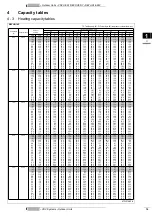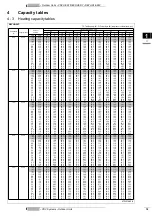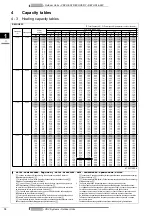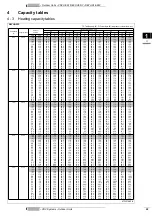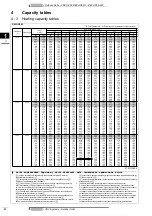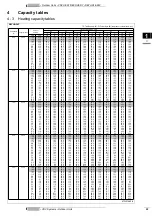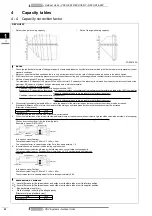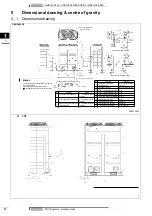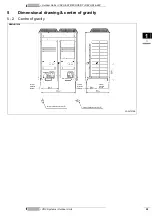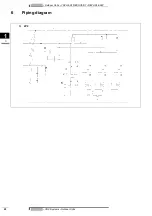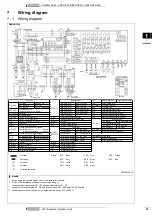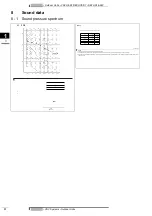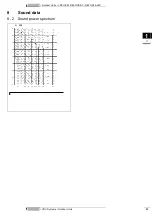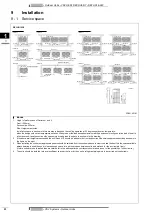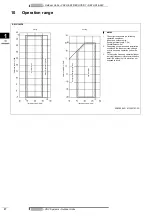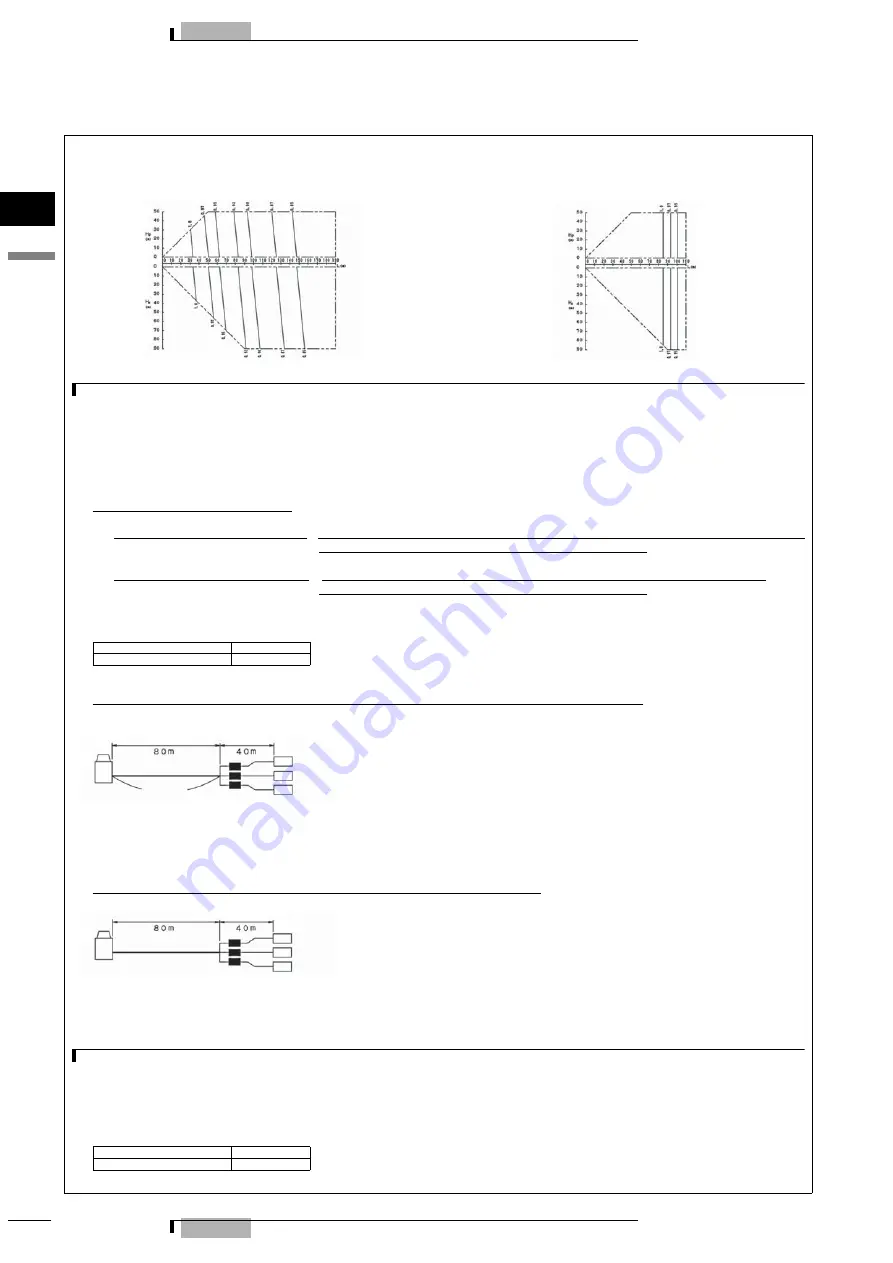
• Outdoor Units • VRV HEAT RECOVERY • REYHQ16-24P
1
4
• VRV Systems • Outdoor Units
23
4
Capacity tables
4 - 4
Capacity correction factor
REYHQ16P
•
Rate of change in cooling capacity
•
Rate of change in heating capacity
3D058183A
NOTES
1
These figures illustrate the rate of change in capacity of a standard indoor unit system at maximum load (with the thermostat set to maximum) under
standard conditions.
Moreover, under partial load conditions there is only a minor deviation from the rate of change in capacity shown in the above figures.
2
With this outdoor unit, evaporating pressure constant control when cooling, and condensing pressure constant control when heating is carried out.
3
Method of calculating A/C (cooling / heating) capacity:
The maximum A/C capacity of the system will be either the total A/C capacity of the indoor units obtained from capacity characteristic table or the
maximum A/C capacity of outdoor units as mentioned below, whichever smaller.
Calculating A/C capacity of outdoor units
•
Condition: Indoor unit combination ratio does not exceed 100%
Maximum A./C capacity of outdoor units = A/C capacity of outdoor units obtained from performance characteristics table at the 100% combination
x capacity change rate due to piping length to the farthest indoor unit
Condition: Indoor unit combination ratio exceeds 100%
Maximum A./C capacity of outdoor units = A/C capacity of outdoor units obtained from capacity characteristics table at the combination
x capacity change rate due to piping length to the farthest indoor unit
4
When overall equivalent pipe length is 90m or more, the diameter of the main liquid pipes (outdoor unit-branch sections) must be increased.
When level difference is 50m or more, the diameter of the main gas and liquid pipes (outdoor unit-brach sections) must be increased.
[Diameter of above case]
*If available on the site, use this size. Otherwise, not increased.
5
When the main sections of the interunit liquid pipe diameters are increased the overall equivalent length should be calculated as follows. (Heating only)
Overall equivalent length = Equivalent length to main pipe x Correction Equivalent length after branching
Choose a correction factor from the following table.
Example in case of REYQ18PY1
In the above case (Heating)
Overall equivalent length = 80m x 0.3 + 40m = 64m
The correction factor in capacity when Hp=0m is thus approximately 1.0
6
In combination wich does not include cooling onlyindoor unit.
Calculate the equivalent length pipe by the following when you calculate cooling capacity
Overall equivalent length = Equivalent length to main pipe x 0.5 + Equivalent length after branching
Example
In the above case (Cooling)
Overall equivalent length = 80m x 0.5 + 40m = 80m
The correction factor in capacity when Hp=0m is thus approximately 0.88
EXPLANATION OF SYMBOLS
H
p
: Level difference (m) between indoor and outdoor units where indoor unit in inferior position
H
M
: Level difference (m) between indoor and outdoor units where indoor unit in superior position
L
: Equivalent pipe length (m)
α
: Rate of change in cooling / heating capacity
[Diameter of pipe (standard size)]
Model
Liquid
REYQ16P9Y1B
Ø15.9
Model
Liquid
REYQ16P9Y1B
Ø12.7
Equivalent lenght
Equivalent lenght
Indoor unit
Outdoor unit
Liquid pipe:
Standard size
Branch BS-unit
Equivalent lenght
Equivalent lenght
Indoor unit
Outdoor unit
Branch
BS-unit








